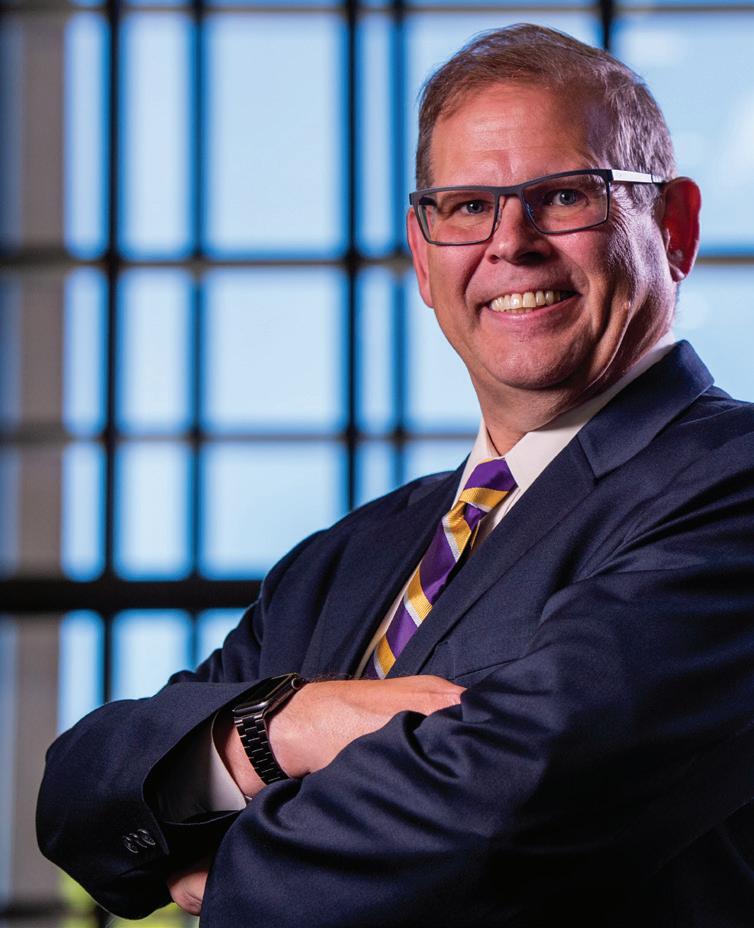
10 minute read
MEET PRESIDENT INCH
EDUCATION
AND LIBERATION
In an interview with TODAY, President Edward Inch discusses the influences and ideas that led him to presidency of Minnesota State Mankato.
By JOE TOUGAS '86
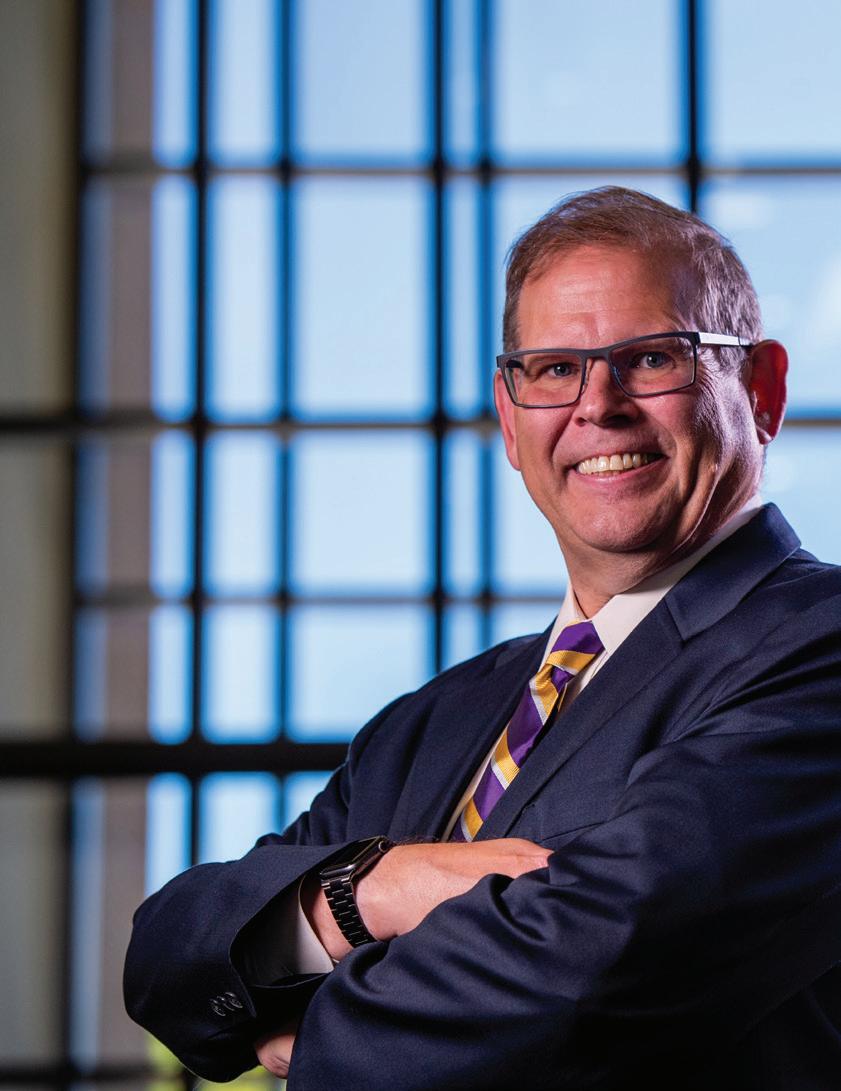
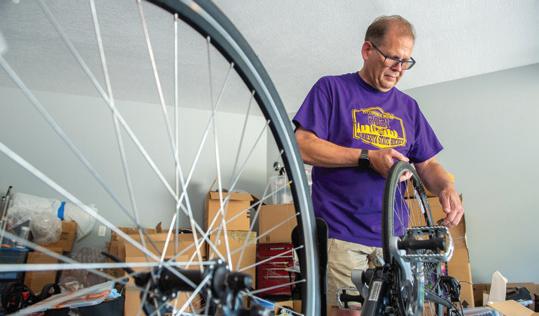
The war stories Edward Inch heard as a child, at least the ones that influenced him most, dealt less with battles and more with children in prison camps being educated in secret. These first-hand accounts gave Inch, the new president of Minnesota State University, Mankato, a perception of education as a force so potent that schoolbooks were deemed a threat to at least one world power. Education, he learned early on, “was the thing that liberated people.” That perception remained as he grew older and carved an academic path as student, advisor, coach, provost and, ultimately, the president he is today. The war stories came from his family friend and godfather, Vincent Herbert Gowen, who had been captured by the Japanese in 1942 and imprisoned in a camp in the Philippines until 1945. Gowen told Inch and his younger brother fascinating, suspenseful stories of teaching history to children in the camp and how girls hid books under their long dresses when guards walked by. Gowen, an Episcopalian priest, took care of Inch and his younger brother while their parents worked or attended college. Both Canadians, his parents moved to Washington when Inch’s father, Lester, took a job teaching middle school math. His wife, Elizabeth, would eventually attend college and become a kindergarten teacher. The family lived on a few acres on Bainbridge Island, a half-hour ferry ride from Seattle. Twelve miles long, three miles wide and at the time a largely rural area, the island provided Inch a memorable childhood: Riding bikes and playing with friends until sundown. His parents made do on a teacher’s income. Meals were made from crops grown on their few acres. They traded with neighbors, had a goat for milk and packed meat away from fall hunting trips. Socially, schools were centers for everything. Sports events, theater productions, dances … all took place on the island’s few schools. The young Edward Inch saw how even the facilities of a school brought people together. It all influenced his career path as he grew older, and played a role in seeking the presidency of Minnesota State Mankato. “I think about growing up and knowing everybody in the community and being a part of something, something more than an individual,” Inch said a few weeks into his role as president. “You think about where you have the greatest potential to make a difference, to do meaningful things, to be part of something bigger than yourself.”
Inch tuning up a bicycle in the garage of his Mankato home.
Coming to Minnesota State Mankato from his role as provost of California State University East Bay, Inch was provided plenty of warnings and kidding about moving to Minnesota. Yes, he’d tell friends and family, he’d read of the folksier pace of the Midwest. Yes, he’d read that Minnesota has 10,000 lakes. That it gets cold. “But physical location is simply a thing,” he said. “Being connected is a bigger thing.”
East to Minnesota
Among the strengths Inch brings to his office is a career-long openness to ideas that contrast his own. It’s a skill set developed through years of debate as both a student and coach: Listen and learn from the other side. It’s a skill in short supply during any divisive times, but it’s even more rare today in a political and social landscape fed by relentless social media and 24-hour news cycles bent on polarization over consensus. The key for students and citizens is knowing good sources, Inch said. “When you don’t select your source material well, it’s easy to get spiraled into a mindset that doesn’t have space for other points of view,” he said. “The current climate is one that is not very tolerant of middle space. I think part of our task as a university is to find ways to allow conversation to occur. You don’t have to agree with everything. But we ought to have the possibilities of conversation. Because if you don’t have that, then conflicts escalate, we stop talking to one another. Creating the relationships that allow us to talk I think becomes terribly important right now.” Inch isn’t just citing old coursework. In the early 2000s he worked with the Nansen Dialogue Center based out of Lillehammer, Norway. The group aims to build connections and resolve conflicts across ethnic and political divides, and Inch made several trips to the former Yugoslavia working with young politicians on conflict resolution and other bridge-building efforts aimed at peace. “Yugoslavia had dissolved, and what the government at the time had done was design messages to be very polarizing, so


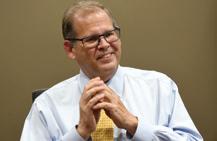
that you either were for the government or you were against it. I was doing some work with the Macedonian daily newspapers, and the articles bore no relationship to one another. And what so many of the people had done is they all had private dish antennas so they could try to get some signal of outside news so they could get more perspectives than what they could find.” The multiple-lenses approach is vital to any university, as is the understanding that single, simple solutions—or people—aren’t likely the answers to complex issues. “No one person studying any one discipline is going to solve the great issues our world faces,” Inch said. “Those are going to be done in community, in concert, in collaboration with people from other points of view, other disciplines, other walks of life. But they help imagine the future we want to build.” Among those communities: Arts. Inch served as Dean of Arts and Letters at California State Sacramento, and before that, while at Pacific Lutheran University, he annually brought students abroad for varied art experiences in the hopes of showing how art transcends political divides. “Because I believed then and I believe now that creating common experiences is a big deal,” he said. “The thing about going to a concert or going to a gallery opening or sporting event… you can bring people together from different communities. They might speak different languages and all these different things. But what you’ve done is you now have this place where people from many different walks of life have had a common experience, and that common experience can serve as the first step toward creating conversation. Even around people who are polarized. They can talk about things that they share.”
A new U
Inch came to Minnesota State Mankato from the San Francisco Bay area, where he served for five years as provost and vice president for academic affairs at California State University, East Bay with 14,500 students. From 2011 to 2016, he served California State University, Sacramento as dean of the College of Arts and Letters. “The best bit of advice I had walking in is: ’Think about everything you’ve learned to this point and know that none of that will serve you as a president. Because the role is so different.’” Throughout his first year, Inch said, he will rely often on cabinet members who served under retired president Richard Davenport, who left a university in good shape considering the battering that could have occurred with the COVID pandemic. Inch is not in a position to have to perform emergency surgery. “The current climate is one that “This campus is doing remarkably well by is not very tolerant of middle any measure,” he said. “I think, wow, how space. I think part of our task as a did I get so lucky to go to a place where university is to find ways to allow there are opportunities to build and it’s conversation to occur.” not a turnaround. It’s not a campus that I think needs to be redesigned.” Early on, he’s eager to explore and expand experiential aspects of learning at the University. He wants to ensure an emphasis on student health and well-being; he’s eager to address enrollment and why some students leave before completing degrees. The list goes on and will continue to grow, and he nods at the prospect of these heavyweight issues now being part of his everyday job. “There’s a lot of responsibility,” he said. “This campus does important work. Its people are important to this community. So in the back of your head you’re saying: ’Alright, don’t screw up.’ But I’m confident in my experiences and ability. I’m confident in the experiences I’ve had working in difficult situations, about how you approach things to understand, to respect. Even if I disagree with the point of view. Everything that is here has been built here over a 150-plus year history. It exists for a reason.” With influences, information and guidance arriving in any number of ways, Inch said his priorities will be centered on students. “To me, the first and fundamental focus of this place is its students,” he said. “At the end of the day, whatever decisions we make, it’s going to be: ’And this benefits students because….?’ Everything we do gets aligned there.”
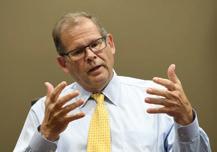

Leaders Across Time
A chronology of University presidents and key developments under their watch. George M. Gage
1867-1872 First principal of the Mankato Normal School and lead teacher. Increased student population but struggled to keep faculty. Resigned to be superintendent of St. Paul Schools.
Julia A. Sears
1872-1873 Named by Mankato Prudential Committee to succeed Gage after one year teaching in Mankato. After a change in authority granted to a state Normal School Board, declined “first assistant” role the next year. Julia A. Sears Residence Community is named for her.
David C. John
1873-1880 Dealt with state calls to close normal schools over high costs. Tightened admission requirements and oversaw expansion to a three-year academic program. Resigned to become president of Hamline College.
Edward Searing
1880-1898 First “president.” Received funding for first building expansion, nearly doubling its size.
Charles H. Cooper
1898-1930 First president of State Teachers College (1921). Strove to increase academics as the school added a four-year program. Construction projects included a gymnasium and the first women’s dormitory, Daniel Buck Hall. As younger students enrolled, the school sought a gender balance.
Frank D. McElroy
1930-1946 Held office during the Great Depression and WWII, during which faculty size grew. Oversaw construction of a valley athletic field and fieldhouse as inter-collegiate athletics began. Academics improved through acceptance into the North Central Association.
Clarence L. Crawford
1946-1965 Oversaw construction of the first men’s dormitory, Searing Center, as Cooper and Buck Halls expanded. Nichols Hall’s first phase and Lincoln Library completed. As upper campus began taking shape, school’s name changed to Mankato State College.
James Nickerson
1966-1973 Created positions of vice president and assistant vice president for academic affairs and administrative affairs. Mall, fountain, Memorial Library, Centennial Student Union and Trafton Science Center added to upper campus. Steadily handled Vietnam War protests in May 1970 and 1972.
Douglas Moore
1973-1978 Oversaw name change to Mankato State University and required the reorganization of academic units into colleges. Changed school mascot to Mavericks (replacing Indians) as campus consolidation continued.
Margaret Preska
1979-1992 Served as enrollment rebounded and construction produced more classroom space including a library addition, the Alumni Foundation Building, the Ostrander Bell Tower and two observatories.
Richard R. Rush
1992-2001 Oversaw construction of Andreas Theatre and completion of the Taylor Center. Served as the quarter system was replaced by semesters and the school’s name changed to Minnesota State University, Mankato.
Richard Davenport
2002-2021 Prioritized technology upgrades and campus renovation including Centennial Student Union, Highland Center and Otto Recreation Center. Gage Towers demolished as modern residence halls were constructed. Ushered in doctoral degree programs and led celebrations of the University’s sesquicentennial. Initiated the “Big ideas. Real-World thinking” tagline.
Interim presidents
Melvin G. Scarlett, Sept. 1965-July 1966 Kent G. Alm, July 1973-March 1974 Edward R. McMahon, August 1978 January 1979 John B. Davis, 1992 Karen A. Boubel, 2001-2002








